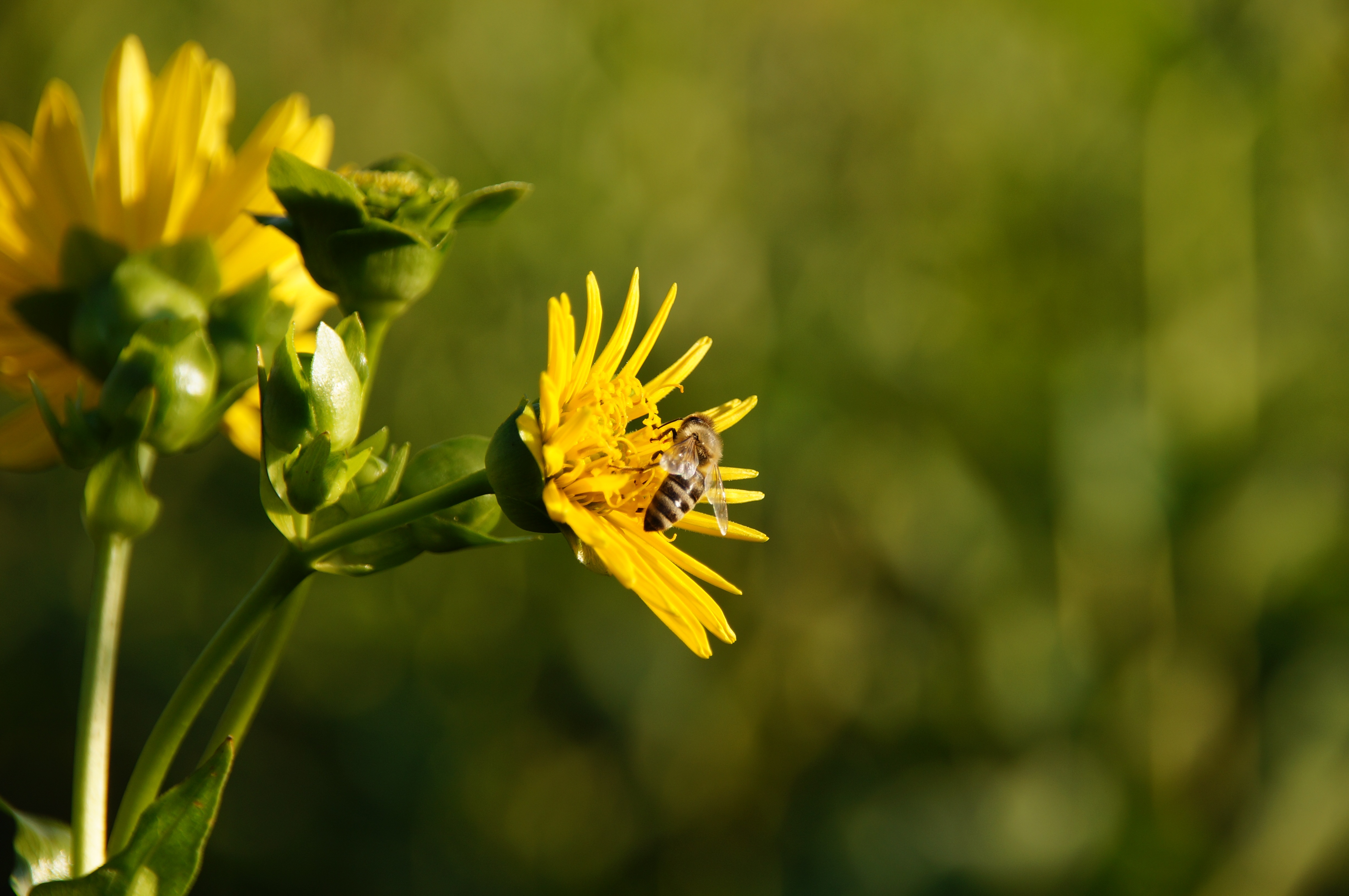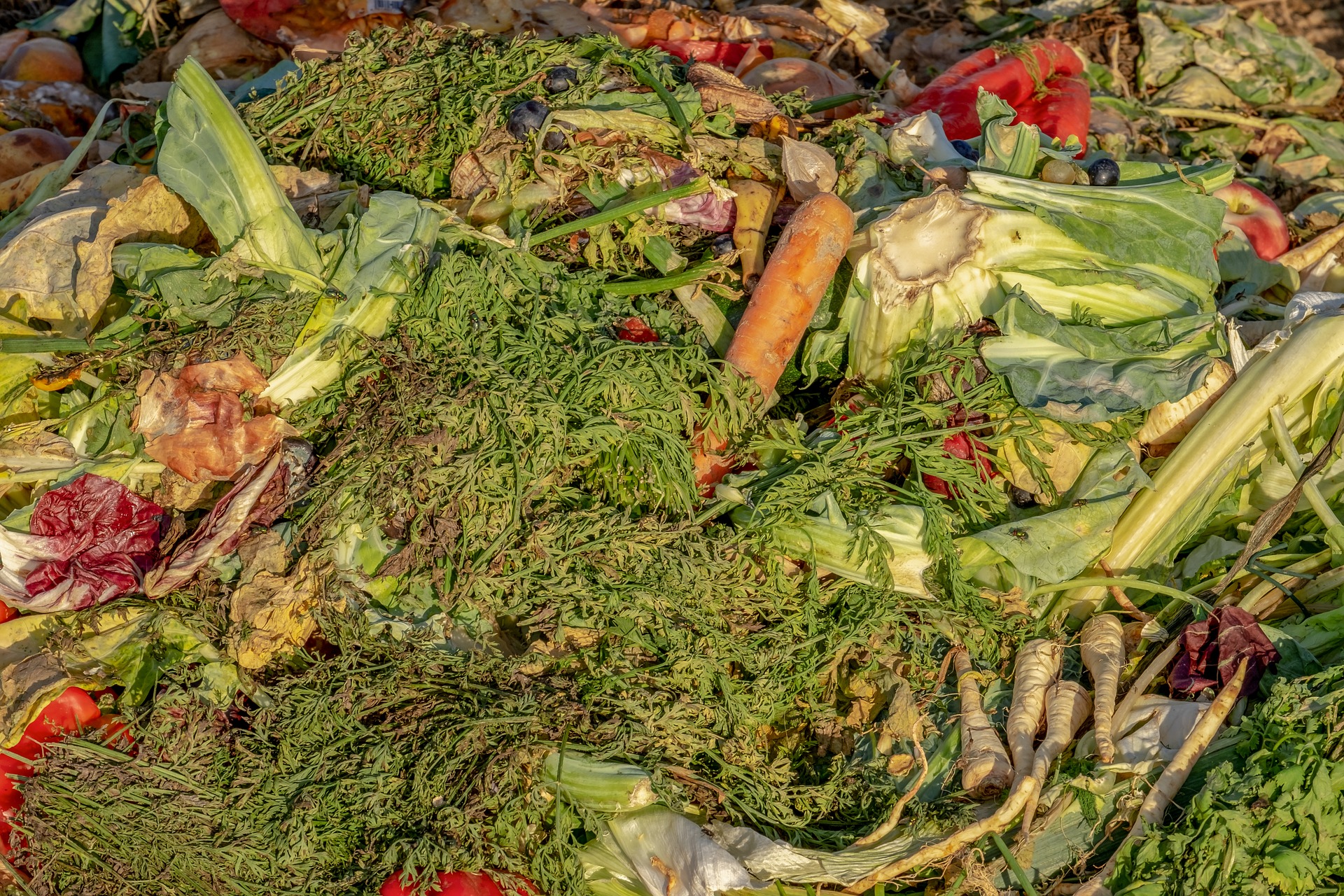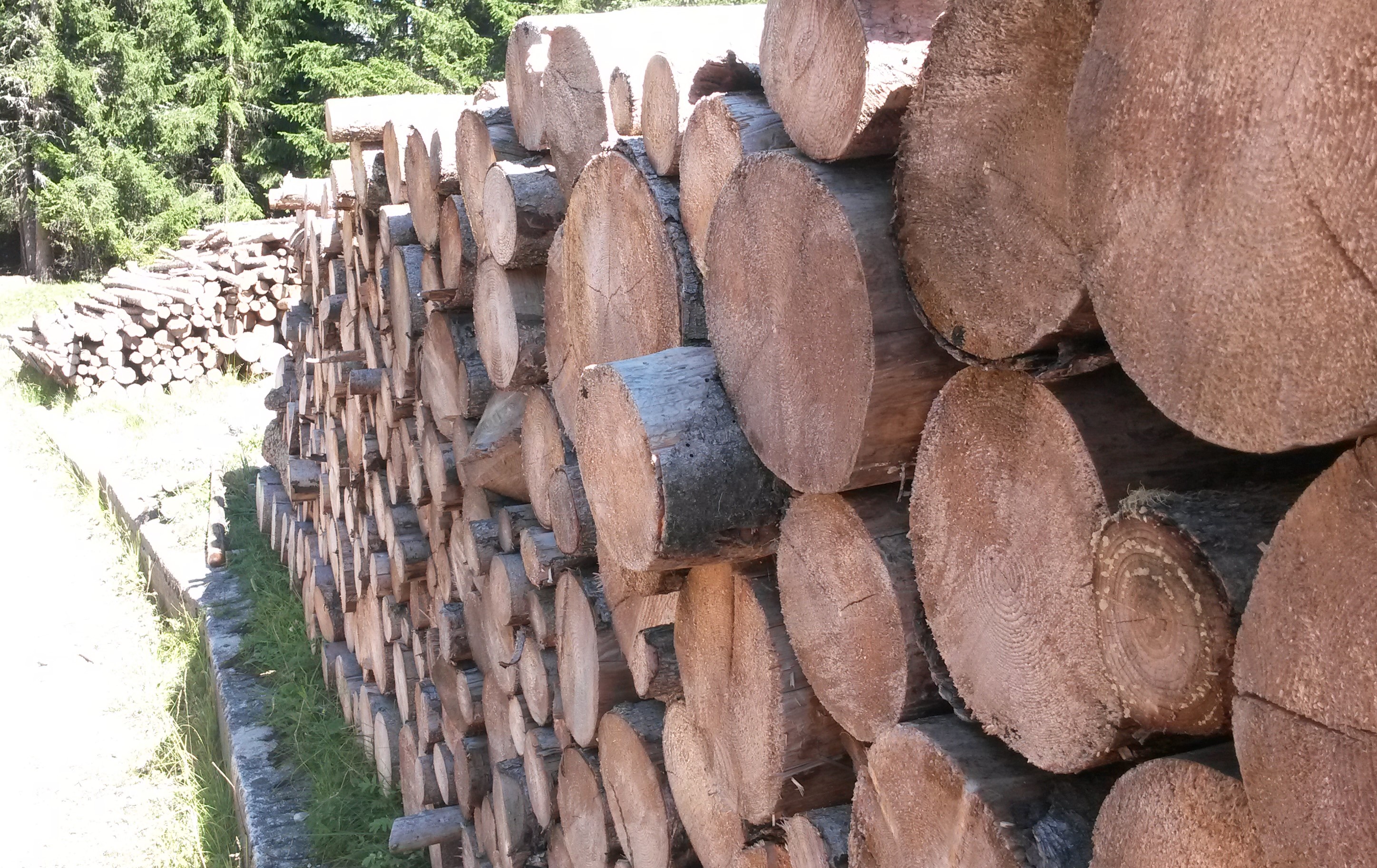Main navigation
Sustainable bioenergy
Biomass from forestry and agriculture along with residues from industry and households can contribute to our energy and raw material shift. Sustainable, regenerative biomass-based energy can become part of the energy mix of the future within the framework of a bioeconomy.
Water, wind, sun, geothermal energy and biomass: these are the resources that are available on Earth for supplying regenerative energies. 1,2
Shifting to an energy supply based on renewable resources must continue to be a key part of climate protection if we are to reach the objective of limiting global warming to a maximum of 2°C. Currently, around 75 percent of the European Union's (EU) greenhouse gas emissions come from energy production (electricity, heat and transport).3 The share of renewable energies in electricity generated in Germany continued to grow in 20194, but no noteworthy increase in renewable energy use was recorded in the heating and transport sector.5
Baden-Württemberg lags significantly behind other German states when it comes to using renewable energies in the electricity and transport sectors, but it does use a large proportion of renewable resources in heat production.
Material and energetic use
As part of a sustainable bioeconomy, biomass-based energy generation offers solutions for further increasing the share of renewable energies in the areas of electricity, heating and transport. As part of a future economic system, the bioeconomy can make products and energy available to the population in a sustainable way. This is based on two pillars: firstly, using renewable raw materials rather than fossil raw materials, and secondly, using biological knowledge and innovative technologies (definition of the term bioeconomy).
Using biomass is particularly important when it comes to producing regenerative energies because it has a dual purpose: it can compensate for fluctuations in power generation from the wind and the sun, and it can be used first as a material and subsequently as a residual material in energy production. Even given that food and feed production and material use always have priority (food ⇒ feed ⇒ fibre ⇒ fuel), the bioeconomy has access to sufficient resources to make an important contribution to the production of bioenergy.
Innovations and applications in the bioeconomy always draw on the entire value chain, starting with the cultivation of raw materials, the subsequent process and product development through to the recycling of residual materials. For this reason, in the article below, bioenergy generation is not seen as an isolated topic, but rather as an interaction with the material use of biomass, for example in the context of coupled use.
Increasing the number of biogas plants

Agriculture and forestry are important pillars of the bioeconomy as biomass producers; they provide sources for materials and energy generation. In 2018, energy generation from biomass represented around eight percent of gross electricity generation in Baden-Württemberg.7 Energy from biomass is generally produced in agricultural biogas plants, which tend to use maize specifically grown for energy production. Experts believe that using a wider variety of plants to produce biogas will make energy generation from biomass more sustainable.
Scientists at the Agricultural Technology Centre Augustenberg (LTZ) are researching Silphium perfoliatum, a species of flowering plant that belongs to the Asteraceae family, for its potential as a future energy crop candidate. This particular plant can withstand drought conditions, is rich in biomass and is used as a food source by honeybees. The advantage for farmers is that it is a recognised greening plant. This therefore helps promote biodiversity, protect the soil against erosion and strengthen marginal sites and ecological focus areas, so that biomass for biogas production does not compete with food production.10,11
Experts believe that biomass material flows and biomass production side flows need to be used in agriculture. In addition to energy crops, residual materials such as liquid manure, organic and green waste from private households, and biodegradable kitchen and canteen waste and residues from gardening and landscaping can be used in biogas plants. These residual materials can also be valuable for farmers. When these residual materials are used as the starting material for biogas production, they can make biogas plants more economical.12 In 2017, nine plants used for fermenting organic and green waste and eight plants for fermenting commercial biowaste were located on non-agricultural, municipal land in Baden-Württemberg.13
Using a variety of substrates in biogas plants

Fermentation residues from biogas plants – now more commonly known as fermentation products – can be used as fertilisers or raw materials for cultivating algae, amongst other things.14 There is also significantly more potential in the bioeconomy for the use of green waste. Experts involved in the Bioeconomy Baden-Württemberg dialogue process came up with recommendations for action: first, expanding the range of products used as materials; second, making biomass utilisation more flexible, i.e. the type of biomass that can be used in biogas plants, and third, increasing the efficiency of biogas plants as a key part of a regional, sustainable bioeconomy.
The technical design of a biogas plant depends on the substrate and therefore indirectly also on its location relative to where the biomass is grown and used. This is why biogas plant manufacturers always recommend building individually planned plants. There is a technical difference between wet and dry fermentation. Most of the agricultural biogas plants use liquid manure and are therefore wet fermentation systems; the dry matter content in fermenter liquid can be up to twelve percent by weight. Dry fermentation, which was originally developed for fermenting organic and residual waste, still requires a humid environment for the fermentation process even though the digestate cannot flow. This is achieved by continuously spraying the material to be fermented with fermentation liquid. Dry fermentation systems use solid manure, renewable raw materials such as maize and grass silage, harvest residues such as straw, and green and organic waste from the waste disposal sector. Biogas is either processed into methane and fed into the gas grid for delivery to energy suppliers or end users, or used for decentralised electricity/heat generation in a combined heat and power plant.15
Other technologies used to produce energy
Biomass gasification is a way to use as many residual materials as possible for generating energy. It is a process that converts wood waste and similar from municipalities and industry, and straw from agriculture and forestry to SNG (synthetic natural gas). SNG is a natural gas substitute. The biomass is placed in a gasifier and converted thermochemically into different gases, mainly CO, CO2 and H2, and then cleaned and converted to SNG by methanation. In Baden-Württemberg, scientists at the DVGW research centre at the Engler Bunte Institute of the Karlsruhe Institute of Technology (KIT) (DVGW: German Gas and Water Association) are studying this process.16 Hydrothermal carbonisation (HTC) is another process by which biomass can be used to generate energy. This technology uses biomass in the form of residual materials, and processes it into biochar at elevated pressure and temperatures of 180 to 250°C. Biochar can be used as an energy source in the same way as lignite, and also as a material such as activated carbon or a soil conditioner.
Material usage options
The "B4B: Biorefinery for the Bioeconomy in Baden-Württemberg" project, funded by the Baden-Württemberg Ministry of Science, Research and the Arts, is investigating how biomass that contains lignocellulose can be used as effectively as possible as a platform material in a pilot plant. This means that, in the future, there is potential to produce basic chemicals in decentralised biogas plants, i.e. directly at the site where residual streams arise or where biomass is grown.8 The bioeconomy also contributes to the transition from fossil-based to renewable energies in that biobased products help with better energy efficiency and reduced final energy consumption, for example in manufacturing biobased products.9 For instance, Fiber Engineering GmbH from Karlsruhe uses fibre injection technology to produce 3D fibre-moulded parts from various renewable raw materials such as sheep's wool or different types of grass in an energy- and resource-efficient manner. The company’s products are then used for insulation and other purposes. Sustainable timber construction offers similar opportunities for increasing resource efficiency.
Heat from wood biomass

In 2018, renewable energies made up 16 percent of the heating sector in Germany, the majority of which was attributable to wood burning.6 And although domestic wood-burning stoves and small combustion systems have recently been blamed for fine dust emissions, experts like Prof. Dr. Stefan Pelz from the forest utilisation, wood technology and wood energy department at the University of Applied Forest Sciences Rottenburg (HFR) believe that heating with wood has a sustainable future. The key is good firing technology and the condition of the wood in terms of moisture content, etc.17 In private households, logs are the main source of fire wood. However, residues from the woodworking industry as well as wood from landscape management offer great utilisation potential for energy generation.
The Baden-Württemberg government is promoting the innovative and efficient use of biomass for energy generation, such as heating with wood, through its Bioenergy Villages funding programme and bioenergy competition. One project that has received funding is a wood gasification plant coupled with a combined heat and power plant operated by Friedrich Wahl GmbH & Co.KG in Sulzbach-Laufen. This plant uses the remnants that accumulate in the company's sawmill to generate energy in a wood gasification plant.18
Linking sectors and converting energy
Around 7 percent of the energy produced with renewable energy sources is used as biofuels in the transport sector. Biofuels include bioethanol, rapeseed oil, methane from biogas and BtL (biomass to liquid) fuels obtained from residual materials. Using similar production methods to SNG, the BtL process thermochemically converts the biomass into synthesis gas and transforms it into liquid hydrocarbons using the Fischer-Tropsch process.
As we move towards a sustainable energy transition, the coupling of the electricity, transport and heat sectors plays a major role in industrial processes. Interlinking individual sectors should make it possible to use and store energy even more efficiently. For example, wind-generated energy can be converted into heat using heat pump heating (power-to-heat). Storing energy generated by the wind and sun, and potentially enabling the energy to be used in the heat and transport sectors is one of the challenges of the energy transition process. A P2X consortium funded by the German Ministry of Education and Research (BMBF) and other so-called Copernicus projects (largest research initiative on the energy transition to date launched by the German Federal Ministry of Education and Research (BMBF)) are looking for key ways to store wind and solar energy through various research approaches. The consortium also involves scientists from Baden-Württemberg. The researchers would like to present different ways to achieve and test "power-to-X” (i.e. carbon-neutral energy storage and sector coupling technology) for their economic benefits. One example is to use renewable energies such as wind or solar energy to produce gaseous substances such as hydrogen or methane (power-to-gas). Moreover, the power-to-liquid process or the power-to-chemical process mentioned above can be used to produce basic chemicals for the chemical industry.19,20
Biomass thus offers numerous opportunities for sustainably producing energy as part of a bioeconomy, and compensating for times when there is no wind or sun to produce energy. In 2019, a survey of German states ranked Baden-Württemberg second place among all German states for the development of renewable energies, a sign that Baden-Württemberg is clearly on the right track.22 This excellent position can be attributed, amongst other things, to a good rating for the "efforts to use renewable energies" and climate-friendly heat generation, for example through wood. However, the survey also found that Baden-Württemberg lags behind other German states in terms of gross electricity generation from renewable sources. Biomass is the largest contributor, accounting for eight per cent of the sources; so as a component of a sustainable bioeconomy, it is already making a major contribution to the supply of energy in Baden-Württemberg. The experts involved in Baden-Württemberg’s participation and dialogue process believe that there is still room for improvement, particularly through intelligent material flow management and the use of residual material flows. The potential of biomass and thus the bioeconomy is therefore far from exhausted.
References:
1 Study “Climate risk an response”, January 2020, McKinsey Global Institute
https://www.mckinsey.com/~/media/McKinsey/Business%20Functions/Sustainability/Our%20Insights/Climate%20risk%20and%20response%20Physical%20hazards%20and%20socioeconomic%20impacts/MGI-Climate-risk-and-response-Executive-summary-vF.ashx
2 Press release by the Potsdam Institute for Climate Impact Research (PIK) e. V., 6th December 2019
https://www.pik-potsdam.de/aktuelles/pressemitteilungen/forschung-an-cop25-zehn-dinge-die-klima-verhandler-wissen-muessen
3 EU Commission announcement: A clean planet for all: A European strategic long-term vision for a prosperous, modern, competitive and climate neutral economy. 28th November 2018, https://eur-lex.europa.eu/legal-content/EN/TXT/PDF/?uri=CELEX:52018DC0773&from=ENhttps://eur-lex.europa.eu/legal-content/DE/TXT/HTML/?uri=CELEX:52018DC0773&from=EN
4 Press release by the German Environment Agency, 20th December 2019, https://www.umweltbundesamt.de/presse/pressemitteilungen/bilanz-2019-erstmals-mehr-strom-aus-erneuerbaren
5 Entwicklung der erneuerbaren Energien in den ersten drei Quartalen 2019, quarterly report of the Erneuerbare Energien-Statistik work group and https://www.umweltbundesamt.de/themen/klima-energie/erneuerbare-energien/erneuerbare-energien-in-zahlen
6 Monitoring der Energiewende in Baden-Württemberg, Statusbericht 2019
https://www.zsw-bw.de/fileadmin/user_upload/PDFs/Aktuelles/2019/Monitoringbericht_2019_barrierefrei.pdf
7 Im Blickpunkt: Energie in Baden-Württemberg, Baden-Württemberg Statistics Office: https://www.statistik-bw.de/Service/Veroeff/Faltblatt/803819021.pdf
8 "Biorefinery for the bioeconomy in Baden-Württemberg (B4B) https://www.bio-pro.de/projekte/bioraffinerie-fuer-die-biooekonomie-baden-wuerttemberg-b4b
9 Bericht zum Beteiligungsprozess - Plan B wie Bioökonomie N- achhaltige Bioökonomie für urbane und industrielle Räume https://www.biooekonomie-bw.de/
10 Article "Kompetenzzentren in BW – das Landwirtschaftliche Technologiezentrum Augustenberg"
https://www.biooekonomie-bw.de/fachbeitrag/aktuell/kompetenzzentren-in-bw-das-landwirtschaftliche-technologiezentrum-augustenberg
11 Demonstration farm "Artenvielfalt auf Äckern" at the LTZ branch in Rheinstetten-Forchheim
https://ltz.landwirtschaft-bw.de/pb/,Lde/Startseite/Arbeitsfelder/Massnahmen+des+_Demonstrationsbetriebes+Artenvielfalt+auf+Aeckern_
12 Bericht zum Dialogprozess Bioökonomie – Wertschöpfung mit Zukunft: Nachhaltige Bioökonomie für den ländlichen Raum https://www.biooekonomie-bw.de/
13 Aktuelle Entwicklung und Perspektiven der Biogasproduktion aus Bioabfall und Gülle Abschlussbericht, Umweltbundesamt https://www.umweltbundesamt.de/sites/default/files/medien/1410/publikationen/2019-04-15_texte_41-2019_biogasproduktion.pdf
14 Article: "Residues from biogas plants as feed for algae"
https://www.biooekonomie-bw.de/en/articles/news/residues-from-biogas-plants-as-feed-for-algae
15 Guidelines "Biogas: Von der Gewinnung zur Nutzung", Agency for Renewable Resourcers http://www.fnr.de/fileadmin/allgemein/pdf/broschueren/Leitfaden_Biogas_web_V01.pdf
16 Biomassevergasung in Deutschland, Fachzeitschrift energie | wasser-praxis 9/2019 https://www.dvgw-ebi.de/download/ewp_0919_00-02_Mueller.pdf.
17 Interview: "Wood: A cornerstone in energy transisiton“
https://www.biooekonomie-bw.de/en/articles/news/Wood-a-cornerstone-in-energy-transition
18 Project contribution "Holzvergasungsanlage mit Kraft-Wärme-Kopplung"
https://um.baden-wuerttemberg.de/de/energie/erneuerbare-energien/bioenergie/bionenergiewettbewerb-und-bioenergiedoerfer/weitere-projekte/holzvergasungsanlage-mit-kraft-waerme-kopplung/
19 Project page "Copernicus Projects“, Federal Ministry of Education and Research https://www.kopernikus-projekte.de/
20 "Power-to-X technologies and renewables" https://www.biooekonomie-bw.de/en/articles/pm/power-to-x-technologies-and-renewables
21 Platform "Erneuerbare Energien Baden-Württemberg e.V. "https://erneuerbare-bw.de/de/
22 Press release by the Agency of Renewable Resources
https://www.unendlich-viel-energie.de/bundeslaendervergleich-erneuerbare-energien-schleswig-holstein-und-baden-wuerttemberg-sind-vorreiter